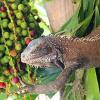-
Welcome to the eG Forums, a service of the eGullet Society for Culinary Arts & Letters. The Society is a 501(c)3 not-for-profit organization dedicated to the advancement of the culinary arts. These advertising-free forums are provided free of charge through donations from Society members. Anyone may read the forums, but to post you must create a free account.
Cape Wines
-
Similar Content
-
- 791 replies
- 156,867 views
-
Shaoxing Wine 1 2
By liuzhou,
- 44 replies
- 18,639 views
-
- 262 replies
- 68,987 views
-
- 2 replies
- 1,731 views
-
- 0 replies
- 1,740 views
-
-
Recently Browsing 0 members
- No registered users viewing this page.





Recommended Posts